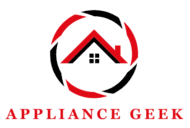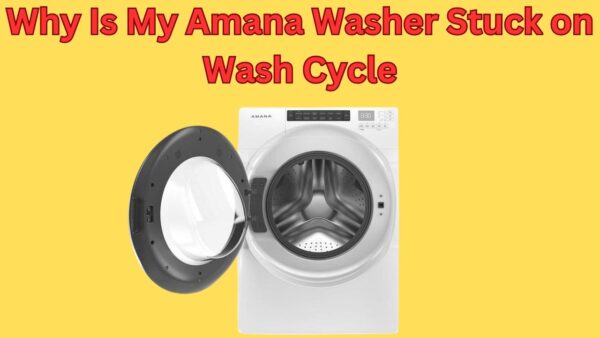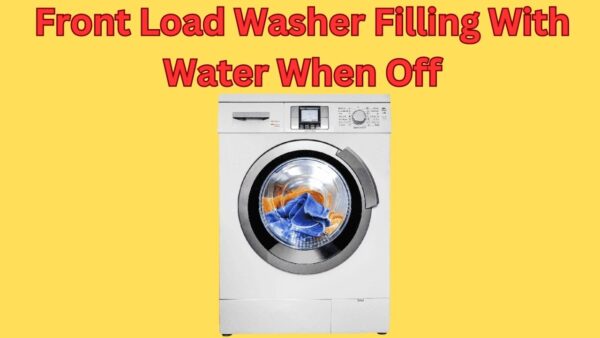Hi dear visitor welcome to our blog.
if your Kitchenaid Dishwasher Overheating. Don’t worry this is a common thing.
in this guide, we discussed 7 common reasons for this problem with unique solutions.
Kitchenaid Dishwasher Overheating

1. Faulty Heating Element
Cause
Overheating in a Kitchenaid dishwasher can be attributed to a faulty heating element.
The heating element is responsible for heating up the water during the wash and rinse cycles.
If the element is damaged or malfunctions, it may start heating the water beyond the desired temperature, leading to overheating.
Common signs of a faulty heating element include visibly damaged or warped elements and a dishwasher that doesn’t clean dishes properly.
Solution
The most effective solution to a faulty heating element is to replace it.
It is highly recommended to enlist a professional appliance repair service for this task to ensure proper replacement and avoid potential hazards.
Before calling a professional, you can also try resetting the dishwasher or checking your home’s circuit breaker to ensure the issue isn’t related to the power supply.
However, if the problem persists, a professional inspection and replacement of the heating element will be necessary.
2. Inadequate Venting
Cause
Inadequate venting often stems from improper installation of ventilation systems or structural anomalies that impede airflow.
This can lead to a buildup of stale air and moisture within the property, culminating in a damp, stuffy environment that hinders comfort and could lead to long-term health hazards.
Poor ventilation might not be immediately noticeable but its repercussions can be damaging over time.
Solution
The solution to inadequate venting lies in a comprehensive assessment and potential overhaul of the existing ventilation system.
This might entail the installation of new vents or fans, repositioning of current vents, or perhaps a shift to a more effective system such as Mechanical Ventilation Heat Recovery (MVHR).
Engaging a professional for a thorough evaluation and implementation of the necessary changes is imperative to ensure optimal ventilation.
3. Insufficient Water Supply
Cause
The root cause of insufficient water supply often stems from a combination of climate change, population growth, and poor water management.
Climate change leads to erratic weather patterns, causing droughts in some areas and flooding in others.
Additionally, a rapidly expanding population can place strain on existing water resources, while poor water management can lead to wasteful overuse and contamination of water supplies.
Understanding the root causes of water scarcity is crucial for developing effective solutions.
Solution
Solutions to address the issue of insufficient water supply should be multifaceted.
This includes implementing better water management policies, investing in technologies for water conservation, and educating the public about the importance of water conservation.
Adopting such comprehensive measures can significantly alleviate water scarcity, ensuring this vital resource’s sustainability for future generations.
4. Blocked Drain Pump
Cause
A blocked drain pump is often caused by foreign objects lodged within the pump or the drain hose. These objects can be anything from small clothing items, hair, or even accumulated lint.
Routine checks and maintenance can prevent such blockages.
Solution
To solve the issue, you would need to disconnect the appliance from the power source, remove the drain pump cover, and clear out any obstructions.
Ensure you’re wearing protective gloves to avoid injury.
After this process, test the appliance to see if the issue has been resolved. If the problem persists, professional assistance may be required.
Never attempt repairs beyond your comfort level. Safety is paramount.
5. Faulty Thermostat
Cause
One of the primary causes of a faulty thermostat is a dead battery. Other culprits can include dust accumulation, aging, or mechanical issues.
An incorrectly calibrated thermostat can also result in erroneous readings, leading to discomfort and increased energy usage.
Remember, a faulty thermostat can significantly affect your HVAC system’s efficiency, disrupt the comfort of your living space, and potentially heighten energy costs.
Solution
Addressing a faulty thermostat begins with simple checks. Change the batteries and ensure the thermostat is set to the correct setting.
If the issue persists, consider hiring a professional to examine the wiring and calibrate the unit. Sometimes, the best solution is replacing the old unit with a newer, more efficient model.
Take note, addressing thermostat issues promptly can prevent further damage to your HVAC system and help maintain a comfortable, energy-efficient home environment.
6. Ineffective Motor
Cause
The inefficacy of a motor can be attributed to a multitude of factors ranging from electrical issues to mechanical defects.
This may include overheating due to poor ventilation, insufficient power supply, or wear and tear of motor parts over time.
Solution
Remedying an ineffective motor involves diagnosing the cause and implementing a suitable solution.
For instance, improving ventilation in the motor environment can alleviate overheating issues.
In cases of insufficient power supply, checking and fixing the power source is recommended.
Lastly, regular maintenance and timely replacement of worn-out parts can ensure optimal motor performance.
7. Damaged Water Inlet Valve
Cause
The water inlet valve, which controls the flow of water into your appliance, can get damaged due to various reasons.
Over time, mineral deposits can build up and clog the valve, or it may suffer from wear and tear. This can result in issues like your appliance not filling up with water or overflowing.
Solution
If you suspect a damaged water inlet valve, it’s advisable to seek professional help.
Ensure your appliance is disconnected from the power source before any checks or replacements are conducted to avoid any safety hazards.
Replacement parts should match the specifications of your appliance for optimal performance.
Regular maintenance and cleaning can help prevent mineral buildup and prolong the lifespan of your valve.
8. Malfunctioned Control Board
Cause
The root cause of a malfunctioning control board can often be traced back to power issues, like sudden power surges or fluctuations, causing the electrical components to fail or not perform optimally.
Environmental factors such as dust, moisture, and temperature extremes may also contribute to a board malfunction.
A lack of regular maintenance, failure to update software, and hardware incompatibility are other common reasons.
Solution
The solution to a malfunctioning control board requires a careful approach. Start by checking for any visible damages, or dust and moisture buildup.
If the problem persists, consider hiring a professional technician or replacing the control board if it is beyond repair.
Keep in mind to regularly update software, perform routine maintenance, and ensure hardware compatibility to prevent such issues in the future.
9. Poor Wiring and Electrical Connections
Cause
Poor wiring and electrical connections can occur due to a number of reasons.
These may include the usage of sub-standard materials, improper installation, and lack of regular maintenance.
Such wiring can be a potential fire hazard and may lead to equipment malfunctioning.
Common symptoms of poor wiring may include flickering lights, frequent electrical surges, high electricity bills, or a burning smell around electronic devices.
Solution
The best solution to this problem is to hire a professional electrician.
A licensed professional can correctly identify weak areas, replace inferior materials, and ensure that the installation adheres to the standard safety codes.
Regular inspection and maintenance of the electrical system can prevent most of the common problems associated with poor wiring.
Remember, safety should always be of utmost priority when dealing with electricity.
10. Faulty Timer
Cause
A faulty timer in any electronic device can lead to a myriad of issues, often disrupting the overall functionality of the system.
The root cause could be attributed to a number of factors such as a manufacturing defect, wear and tear over time, or a sudden power surge that could damage the timer’s circuitry.
Solution
Addressing a faulty timer primarily involves a thorough diagnosis to identify the root cause.
Once identified, the next step is to replace the damaged timer or fix the underlying issue if it’s repairable. It’s highly recommended to seek professional assistance to avoid further damage.
Remember, safety should always be your first priority. If the device is still under warranty, contacting the manufacturer would be the ideal course of action.
11. Insufficient Coolant Circulation
Cause
Insufficient coolant circulation can often be traced back to a malfunctioning water pump, a clogged radiator, or a closed thermostat.
The cooling system relies on these components to circulate the coolant effectively.
When one or all of these fail or become obstructed, coolant circulation becomes compromised, leading to overheating.
A faulty water pump, a clogged radiator, and a closed thermostat are common causes of inadequate coolant circulation.
Solution
Addressing this issue involves thorough inspection and maintenance. The water pump should be checked for leaks and operation.
The radiator should be examined for blockages and cleaned if necessary.
If the thermostat is closed, it must be replaced. Regular maintenance of these components can prevent insufficient coolant circulation.
Regular checks and maintenance of the water pump, radiator, and thermostat are essential in preventing insufficient coolant circulation.
Conclusion
We find that the implications of our study are multi-faceted. These findings not only reinforce the existing understanding in the field but also provide several promising avenues for future research.
The evidence at hand underscores the importance of continued exploration and investment in this area.
Our hope is that this work will serve as a reliable guide and a catalyst for further investigation, encouraging the quest for new knowledge and the pursuit of innovative solutions.
FAQs
Why does the dishwasher overheat?
Dishwashers may overheat due to malfunctioning thermostats that fail to regulate temperature, leading to excessive heat levels.
What is the most common problem with a Kitchenaid dishwasher?
The most frequent issue with a KitchenAid dishwasher is often related to draining, like the dishwasher not draining water properly.
Why does my Kitchenaid dishwasher smell like it’s burning?
A burning smell from your KitchenAid dishwasher might indicate an issue with the motor, or possibly debris caught in the heating element.
Whirlpool Dishwasher vs Kitchenaid
Kitchenaid Dishwasher Arms Not Spinning
GE Front Load Washer Control Panel Problems

Name: Joseph Title: Owner and Founder Website: myappliancegeek.com
Biographical Info:
Joseph, the creative mind and founder behind myappliancegeek.com is a distinguished expert in the field of home appliances and technology.
Education: Joseph holds a prestigious degree in Appliance Engineering from a renowned institution in the United States, [Stanford University], where he gained a profound understanding of appliance design, mechanics, and technology.
Professional Experience: Joseph’s professional journey spans over [18 ] years in the home appliance industry. His extensive experience includes working with industry-leading appliance manufacturers, prominent retailers, and appliance repair services.
Entrepreneurship: In [2000], Joseph founded myappliancegeek.com, a platform dedicated to providing comprehensive information, advice, and solutions for those seeking guidance in the world of appliances.
Passion for Appliances: Joseph’s unwavering passion for home appliances stems from his belief in their pivotal role in improving our quality of life.
Contributions to the Industry: Joseph’s commitment to the home appliance industry is evident through his extensive writing and speaking engagements.
Community Involvement: Joseph is not only an online presence but also an active member of the community, frequently engaging in outreach programs, local workshops, and charitable initiatives.


